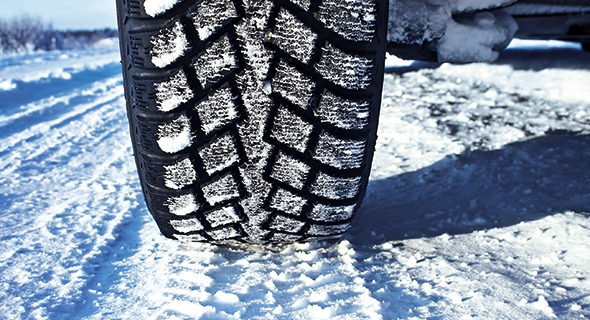Safe practices for winter driving
Whether you drive a commercial hazmat rig, commute the Chrysler to the office or schlep the Subaru to the grocery store, winter driving exposures can create hazardous conditions.
In addition to bad weather and icy conditions, the human factor can make winter driving a messy experience.
A number of years ago, I was driving a minivan full of young hockey players home from an away game. Suddenly brake lights flashed, vehicles in front of me started spinning and it was apparent that everyone was going too fast for conditions. I hit the ditch on the left to avoid the pileup. After turning sideways and regaining control, I navigated the mess and escaped a serious situation. My heart was in my throat. We could have died.
That was before smartphones. I believe the human factor in driving is severely impaired by our mobile access to information through our smartphones and mini computers.
In the old days, most distracted-driving exposures were related to adjusting the radio, eating or applying makeup while driving.
These new-fangled phones of today can be so engaging that some drivers act like they are riding on the bus, oblivious to their own drifting or unsignalled lane changes – let alone impending brake lights. When we use these distracting tools while driving, it is a matter of time before we look up too late to stop or take the ditch. A simple second of distraction can wind up tragic and costly.
Failing to stay focused while hauling hazardous material can be dangerous in good weather. When the weather turns bad, every distraction and/or failure to comply with DOT requirements creates a slippery slope and potential for an accident.
Bad weather is not always apparent. On warmer winter days with cold nights, it is not always easy to spot black ice created overnight. Coming down a grade at normal speed can suddenly feel like dancing on ice with leather soles.
As the salesmen advised in the musical “The Music Man,” “You’ve got to know the territory.”
The key to surviving black ice and slippery slopes is awareness of temperature changes and knowing the territory. Certain roads and hollows always have more than their share of potentially freezing condensation and moisture. Listen to the news and check out those Google traffic apps (while parked) that can warn you of accidents, hazardous conditions and delays – before you head out.
Make time to take time to be safe. All drivers know that taking a minute to finish paperwork, checking mirrors and conditions for the next route delivery or safest path back to the barn is an essential part of safe driving. It is when we boldly go forward without measuring conditions that our compromises and failure to attend come to light.
Bad habits can be slippery slopes. I remember years ago, while coming out of my motel, I witnessed through a chain-link fence six drivers standing around their bulk trucks smoking and yakking prior to heading off to make their deliveries. Their smoking near the bobtails troubled me because that meant they smoked near them off premises, as well. Secondly I was troubled that they were smoking in the back of the plant yard, behind management’s eyes and hidden from any other authority having jurisdiction. At the time I remember asking myself: How can this be?
The phrase “inspect what you expect” can be a powerful management tool if used effectively. Unfortunately all managers of large and small companies occasionally face situational ethics when deciding to correct behavior or look the other way. To some it’s better not to know, especially where such notation could get them fired or be used against them. Talk about a slippery slope.
At your next safety meeting, discuss icy roads, slippery slopes and exposures to avoid. It may take great courage to do so honestly, but the consequences are worth considering.
Jay Johnston is an insurance executive, safety management consultant and inspirational safety speaker in the propane industry. He can be reached at jay@thesafetyleader.com or by calling 612-802-0663.
















